|
I have dealt with antivaxxers several times in my blog, and I have made my position clear. All the evidence we have indicates that vaccines work and have saved many lives, including the COVID-19 vaccines. I consider that by promoting vaccine hesitancy or avoidance, antivaxxers are harming and even killing people who delay or forfeit potentially life-saving vaccines. Some of the antivaxxers I’ve butted heads with in social media seem to be individuals that, no matter how misguided, are convinced of their position. These individuals respond to my criticism and engage in debates. However, others are nothing but opportunists who are not interested in countering rebuttals of their position. These characters just traffic in likes and shares of what they post, and in the number of comments they receive regardless of their nature. They don’t necessarily believe in antivaxxer arguments, they just use them to grow their accounts, which have tens to hundreds of thousands of followers. In between these two types of antivaxxers is a third kind who is halfway between the previous two. The accounts of these characters have a few hundreds to thousands of followers, and they are very active posting, liking, and sharing vaccine misinformation. They will occasionally respond to criticism, but they will seldom carry on an argument for more than one or two posts. Most importantly, I’ve noticed that they coordinate to like and share each other’s posts, and what they write at times seems to have an odd grammatical structure and choice of words, as though their first language were not English. I have been told that these accounts belong to foreign operatives who are promoting antivaxxer sentiment in the United States and other things to disrupt our society. The concept is not so farfetched as we know for a fact that Russian operatives posted on social media to influence our elections and create chaos. But without specific proof, this is just another conspiracy theory. As many of those who follow my posts know, I have also criticized those who spread conspiracy theories, but what is often lost in the heat of the arguments is that I am talking about unfounded conspiracy theories. I accept the fact that there have been conspiracies promoted by the government or other organizations, and I accept that there may be such activities currently going on, but I have always stressed that you need to have evidence to correctly identify them as such before claiming that there is a conspiracy. Acting otherwise is irresponsible. It is with this in mind that I was surprised to learn about a conspiracy by the US government to spread antivaxxer messages! At the start of the COVID-19 pandemic, China engaged in the spreading of propaganda claiming that the COVID-19 virus came from the United States. Then, in order to increase their influence in other countries, China supplied the COVID-19 vaccine they developed and other things to the Philippines and nations in central Asia and the Middle East that still did not have access to the vaccines made in the United States (a move known as “vaccine diplomacy”). To retaliate for this and counter Chinese influence, the Trump administration authorized a clandestine psychological operation to be carried out by the military in which, using hundreds of fake social media accounts that ended up accumulating altogether tens of thousands of followers, they fanned antivaxxer sentiment in those countries and spread misinformation about the Chinese vaccine. The accounts posted suggestive things such as that the virus came from China and the vaccine too, that the vaccine from China was fake, that it might be a rat killer, and that it contained pork gelatin (this was targeted to Muslim countries). This was at the time that tens of thousands of people were dying each day as a result of COVID-19. After the Biden administration came into power, this particular disinformation program was shut down. The above is not an unfounded conspiracy. We know it is true because the news organization Reuters which broke the story conducted interviews with contractors working for the US army, retired and active US officials, academic researchers and social media analysts, and reviewed data regarding fake social media accounts used by the U.S. military. I have been actively countering antivaxxers and promoting vaccines for years, so I am appalled that our own government participated in spreading these messages. Now, let me make it clear that I am not ignorant about the cutthroat environment of international politics. China is a dictatorship where there is no freedom of the press. People in China who try to investigate any alleged foreign psychological operations carried out by Chinese military operatives will end up in jail. The reason why Reuters was able to discover what the U.S. military was doing, and the reason we learned about it, is because of the freedoms we enjoy in this country. I could not have written this post if it were not for those freedoms. Therefore, I understand that the United States has to fight against governments such as the Chinese in several fronts, including the psychological realm, to counter its influence. However, I don’t think the way to do it is to spread antivaxxer messages or misinformation about a vaccine. And in thinking like this I am not alone. Top U.S. diplomats in Southeast Asia strongly objected to the anti-vax campaign, but they were overruled. Reuters quotes one American military official saying, “We weren’t looking at this from a public health perspective. We were looking at how we could drag China through the mud.” In the end, China’s vaccine diplomacy was not as successful as they expected, although probably not due to the psychological operation carried out by the U.S. government, but rather due to hard power tactics that China employed in many countries where they came across as an aggressor. Whether the U.S. caused damage due to its antivaxxer campaign is difficult to discern. The evidence we have indicates that the Chinese vaccine worked reasonably well against the initial variants of the COVID-19 virus. In places where only the Chinese vaccine was available, it saved lives. Therefore, anyone foregoing receiving the Chinese vaccine could have placed themselves in danger. I am not a military operative specialized in conducting psychological operations. But I would venture that any way of countering the influence of China or other countries or organizations has to take into account the well-being of foreign nationals. Instead of conducting this antivaxxer campaign, the US government could have, for example, been more proactive in sharing the COVID-19 vaccines developed in the United States with other countries from the beginning to build up goodwill towards the United States. That’s just my two cents. The unmodified image by Christian Emmer is used under an Attribution Noncomercial 4.0 international Deed (CC BY-NC 4.0).
0 Comments
 Antivaxxers are people who deny the need for or the efficacy of vaccines and their role in controlling some of the most dreadful diseases in the history of humanity. Not only this, but antivaxxers also claim that vaccines have huge side effects that actually harm more people than they benefit, and they have been particularly vocal about the COVID-19 vaccines. All this is, of course, not true. The COVID-19 vaccines have saved millions of lives by decreasing the proportion of hospitalizations and deaths among the vaccinated to a much greater extent compared to the unvaccinated. Antivaxxers have also spread misinformation and lies about the COVID-19 vaccines that have been repeatedly debunked over and over and over. Nevertheless, they ignore this while expressing outrage at pro-vaccine people, at best calling them “sheep” (sheeple), or at worst claiming that they are being manipulated by or are part of an immoral and unethical alliance of the government, pharmaceutical companies, and other organizations bent on profit and societal control. So what should be my approach to dealing with antivaxxers? I see two alternatives: the inflammatory approach and the conciliatory approach. INFLAMMATORY APPROACH
Considering the high effectiveness of the COVID vaccines at decreasing the hospitalizations and deaths from COVID-19, considering that antivaxxers have been waging an aggressive campaign of spreading misinformation about the COVID-19 vaccines on social media, and considering that online misinformation is linked to COVID vaccination hesitancy and refusal, it is not surprising that many people were harmed or killed by the misinformation spread by antivaxxers. During the peak of the Delta variant the daily consequences of spreading misinformation have been estimated at 300 deaths, 1,200 hospitalizations, and 20,000 COVID-19 cases with a cost of 50 to 300 million dollars. I am appalled and outraged at how many lives antivaxxers have damaged. So my question is: should antivaxxers pay for their crimes? This is not a far-fetched concept. Alex Jones, the talking head from Infowars, spread misinformation and disinformation about the shooting at Sandy Hook Elementary School where 20 children and 6 adults were killed. He said that the shooting was a false flag operation carried out by anti-gun groups, that no one died, and that the children were actors. As a result of this, the families of the murdered children experienced years of harassment by the followers of Alex Jones. Thankfully, he was brought to court and tried and found guilty, and now he has to pay the Sandy Hook families millions of dollars. Alex Jones tried several defenses including his right to free speech, but the judges didn’t buy it. He spread falsehoods and this hurt people. That was the bottom line. So, if anything, the case against antivaxxers should be even more clear cut, because many people who followed their ideas were harmed or died. Although in the case of Alex Jones the Sandy Hook families sued him for slander, a person or the family of a person harmed by antivaxxers could sue them for fraud. They would have to prove that the antivaxxer spread the misinformation while knowing that it was false. They would have to prove that the person who was harmed relied on the antivaxxer in their decision to forgo vaccination. And they would have to prove that there was economic loss (hospital bills, lost wages, funeral expenses, etc.). There are, of course, additional subtleties that have to be taken into account depending on the specific antivaxxer entity or person being sued, but this is a possible approach. Following this rationale, I think that at the very least, any antivaxxer that fulfils the conditions outlined above should be sued for the medical and funeral expenses incurred by the people (or their relatives) who followed their advice in good faith and were harmed or died. The above is the inflammatory approach. It’s the sort of thing you say/write to scandalize and infuriate people and increase their engagement, drive traffic to your blog, website, or podcast, and grow your brand. This approach makes tempers flare and generates a lot of heat and ill will as invectives fly back and forth and hatred is spewed everywhere. But there is another way to do this. It’s probably not as successful for getting engagement, but it may be more useful to society, civil discourse, and the psychological well-being of the public. CONCILIATORY APPROACH Every time two groups of people have strong disagreements on some things, the recommended course of action is to find areas of agreement. Antivaxxers are concerned about the side effects of COVID-19 vaccines. The evidence we have indicates that the frequency of serious side effects as a result of these vaccines is very low, which makes the vaccines much safer than having the disease. However, even if rare, when hundreds of millions are vaccinated, the number of net cases start to accumulate. And some of these cases are severe enough that exceptionally susceptible people may end up impaired and saddled with huge debts due to their medical bills. Shouldn’t these people be compensated? I would venture that most people, whether pro or anti-vaccine, would agree with this. Unfortunately, this is not what is happening. There is a federal program known as the Vaccine Injury Compensation Program (VICP) that is available to people who have been injured by the routine vaccines that are administered in the United States. This program in its lifetime has awarded $4.7 billion in compensation for vaccine injuries to cover 36% of the claims it has received. But this program does not cover the COVID-19 vaccines. Compensation for harm from the COVID-19 vaccines is handled by a program called the Countermeasures Injury Compensation Program (CICP). The CICP program was designed to handle compensation for people injured by treatment for rare events such as an Anthrax attack, but this program is now handling compensation claims for a treatment dispensed to hundreds of millions of Americans. The CICP program is underfunded, understaffed, and overwhelmed with claims, which it is resolving at a glacial pace, and so far congress has not done anything about this. So here is the chance for antivaxxers to make a difference and actually achieve something positive. If they stop their attacks on vaccines and pro-vaccine people and focus on lobbying congress to, for example, expand and fund the CICP program or move the COVID-19 claimants to the VICP program, that would be a major achievement that would help people affected by the side effects of vaccines. At the same time many pro-vaccine individuals and organizations that advocate for the rights of patients could join ranks with them to work together towards a common goal and actually benefit people. The alternative, of course, is to keep engaging in the usual cycle of claims, counterclaims, insults, counterinsults, and endless vitriol, which may help increase engagement but which does not accomplish anything meaningful to benefit society. So my question to antivaxxers is, what is it going to be: inflammatory or conciliatory? Image from pixabay by Gerd Altmann is free for commercial use and was modified from the original. 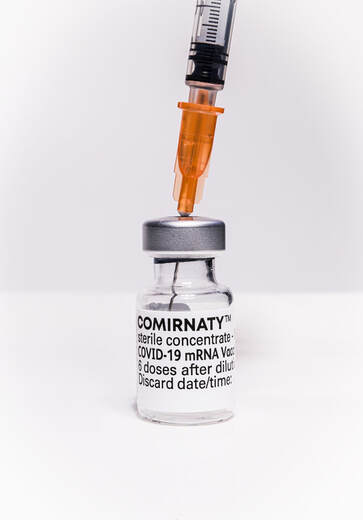 COVID-19 Vaccine COVID-19 Vaccine Those opposed to vaccines (antivaxxers) are fond of quoting government figures to argue that there have been many adverse events due to COVID vaccines. They then proceed to state that because the government figures underreport these adverse events this means that the problem is much, much, worse. They also argue that there is a conspiracy to keep this information from the American public, and they demand that COVID vaccination should stop. What are antivaxxers talking about? What are these government figures? Are they quoting them correctly? What do the numbers mean? By the time vaccines are allowed to be used on the US population, they have gone through multiple clinical trials and other evaluations that have certified they are safe. But this vaccine safety is based on data gathered from at most a few tens of thousands of people. Therefore, it is understood that when vaccines are applied to a population of tens or hundreds of millions there may be some low frequency adverse events that may have not been detected in the clinical trials with a smaller group of people. To account for this, the government in 1990 created a federal database called VAERS (Vaccine Adverse Event Reporting System) that is meant to act as an early warning system to detect possible safety problems with vaccines. However, VAERS is a passive reporting system. This means that anyone can file a VAERS report regardless of its nature, and that report is entered into the database and cannot be removed without the permission of the person who reported it. Although knowingly filing a false VAERS report is a violation of Federal law, if you are convinced that the adverse event you are describing, no matter how outlandish, is tied to a vaccine, it will be incorporated into the database. For example, Dr. James Laidter mentioned in the neurodiversity weblog that back in 2005 he entered a VAERS report claiming that an influenza vaccine had turned him into the incredible Hulk, and the claim was accepted into the database. However, due to its unusual nature, a VAERS representative did contact him, and after an amicable discussion about the limitations of VAERS, the representative requested his permission to remove the claim to which he agreed. If he had not agreed to that, the claim would have remained in the database. Another example, Kevin Leitch writing for the Left Brain Right Brain science blog mentions that he submitted a VAERS report claiming that a vaccine had turned his baby girl into Wonder Woman, and he is not even a US resident! However, even when considering reasonable adverse events, it must be understood that VAERS reports do not stablish that there is a link between the adverse events reported and vaccination. Each day thousands of people develop a health problem and/or die in the United States in a manner unrelated to vaccines. If any of these people received a vaccine around the time they developed the health problem or died, they could be reported to VAERS thus constituting a false positive. The experts understand that the VAERS database has a high number of these false positives, and they use the database as a very preliminary step to perform more research, gather more data, and establish for sure whether a given event being reported is a real adverse event due to vaccines or not. These experts know that quoting numbers directly from the VAERS system is meaningless insofar as learning anything about the safety of vaccines is concerned. But this is exactly what antivaxxers do! And while some antivaxxers may be ignorant about the nature of VAERS, many of the leading antivaxxer influencers know the shortcomings of VAERS and nevertheless choose to continue reporting or quoting the raw numbers to advance their platforms and promote their agendas. Antivaxxers are also prone to saying that VAERS vastly underestimates the number of vaccine adverse events by as much as 99%, so in some of their alarmist literature they suggest that VAERS numbers should be increased by large multiples. However, although reporting to VAERS of non-serious adverse events such as soreness at the injection site is indeed very low, estimates of the sensitivity of VAERS to serious adverse events, while variable, is much higher than antivaxxers would like us to think. For example, for anaphylaxis due to seven different vaccines, estimates of VAERS reporting sensitivity ranged from 13% to 76%, while for Guillain-Barre Syndrome after three different vaccines the sensitivity ranged from 12% to 64%. Despite its shortcomings, the VAERS system has been useful for detecting rare side effects of the COVID-19 vaccines. For example, an elevated risk of myocarditis and pericarditis has been detected in males 12-29 years of age who have received mostly two doses of the Moderna or Pfizer mRNA COVID-19 vaccines. This is a treatable disease that involves inflammation of the heart or its surrounding membranes. The CDC convened a meeting of experts (the Advisory Committee on Immunization Practices: ACIP) to analyze these cases. The analysis involved weighing any harm caused by the vaccine against its benefits. The committee concluded that the benefits of vaccination outweighed the risks. However, now that we know that this age group is at an elevated risk of myocarditis/pericarditis, vaccine providers and healthcare professionals have been alerted to this side effect and its treatment. This is the way VAERS and science are supposed to work. Rare adverse events of a vaccine are detected, and the risk/benefit is determined after a thorough evaluation of the data available. Then a rational course of action is pursued to achieve the greatest benefit with the least harm. The irresponsible use of VAERS by antivaxxers’s to concoct alarmist articles and memes promotes vaccine hesitancy which in turn prolongs the pandemic, leading to more hospitalizations and deaths and may give rise to new variants of the virus that are more resistant to the vaccine. Photo of the Pfizer-BioNTech vaccine from Max Pixel is in the public domain. 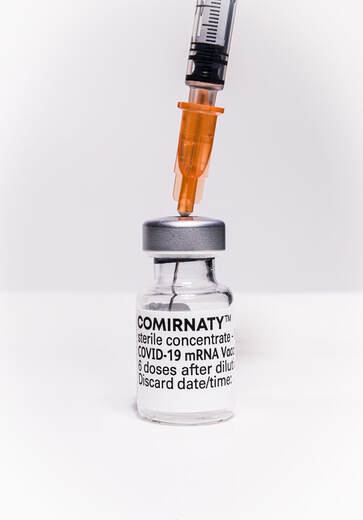 COVID-19 Vaccine COVID-19 Vaccine As I have written several times, science is a process that involves a lot of back and forth. Scientists have different opinions and exchange arguments. They adopt positions based on the available evidence and change their mind when new evidence comes along. As is expected, this process is ongoing for the COVID-19 vaccines. These vaccines have been found to be safe and effective in clinical trials and in studies conducted afterwards in real-world situations. But all vaccines, as everything, do have small risks. For example, the COVID-19 vaccines can cause an anaphylactic reaction in individuals prone to severe allergies, and this is recognized in vaccination decisions and procedures. Because scientists want vaccines to be as safe as possible, there is an effort to identify other rare side effects of vaccines as well as figuring out how the COVID-19 virus works so more effective and safer vaccines can be made. Most COVID-19 vaccines rely on making the cells at the site of injection produce the viral spike protein, which is the protein that allows the virus to get into the cells and infect them. These spike proteins are anchored to the surface of the cells expressing them and trigger the immune response. Therefore, this protein is an object of ongoing research. Several articles have been published in the scientific literature regarding this protein. In one article, researchers found that the spike protein alone in the absence of the rest of the virus can damage the wall of blood vessels (the endothelium). In a another article researchers found that the spike protein alone or its subunits (the spike protein is made up of two subunits) can disrupt the barrier that protects the brain from blood borne substances (the blood brain barrier). These findings, although preliminary, are important in that COVID-19 displays many symptoms involving the circulatory system and indicate that the spike protein alone could be responsible for them.
The issue we are discussing today arises from another article where researchers were able to measure the spike protein in the circulation of patients who had received the COVID-19 vaccine. A Canadian immunologist, Dr. Byram Bridle, saw the above data and (apparently without consulting with colleagues or the authors of the articles) started claiming that we have made a mistake with the COVID-19 vaccines. He unwisely gave interviews where he claimed that the vaccines make our cells produce the spike protein which is a toxin that leaks to the circulation where it can cause damage in some people. Needless to say the antivaxxer social media pages and websites lit up like a Christmas tree and unleashed upon the internet a torrent of posts and memes proclaiming how unsafe the COVID-19 vaccines are, demanding that vaccinations stop, and bragging about how they had been right all along. I am not going to debunk this in detail, as others have done a very good job of that, but here is the gist of the argument. The method used by the researchers that detected the vaccine spike protein in the blood was 100-1000 times more sensitive than regular methods. The amount of protein they measured is basically the background that you would get from a very, very small fraction of the protein making into the circulation because of, for example, cells dying. These levels are tens of thousands of times lower than the spike protein concentrations reported to be detrimental in the other articles. Additionally, the spike protein generated by the vaccine is different from the spike protein from the virus as it has been engineered to be safer. Many scientists including colleagues of Dr. Bridle and even the authors of the papers claim that he is overinterpreting the data. Finally, if indeed the spike protein alone turns out to be responsible for a sizable portion of the COVID-19 pathology, then that is excellent news because the antibodies produced by the vaccine (unlike natural immunity) are all against the spike protein, so they will likely neutralize this toxicity too. Now let me get to the question I formulated in the title of this post. How can you do science in this environment? Scientific research is no cakewalk. There is a lot of frustration and anxiety involved. There are many defeats and few victories. But finally, when scientists find something worth publishing, how do you think they feel when their results are misinterpreted? Every scientist in the COVID-19 field who deals with the demands of research and the toll it takes on their lives must now consider the possibility that the results of their investigations will be splashed in misleading memes all over the internet by the antivaxxer crowd. This means that they will have to devote some of their limited time to dispelling these ideas by doing interviews, writing articles, or answering e-mails from scores of people. But the worst part is that if scientists find something that may be negative about the COVID-19 vaccine, they may be inclined not to publish it just to avoid being in the center of the media hurricane that will surely form around them. And this is terrible, because we need every piece of information so we can have a more complete picture of the safety and efficacy of the vaccines in order to improve them. Science thrives on an open debate among scientists. In the old days this debate, which involves highly technical information with a lot of detail and nuance, took place mostly within the scientific community. Today the public can gain access to this debate by several means. Although this is a positive development, the preliminary data and tentative ideas that scientists generate as part of this debate, are being misrepresented by many people, sometimes out of ignorance, but most of the time as part of an agenda to generate viral stories to cause confusion and sow doubt. And scientists are stuck in the middle of this. The photo of the COVID-19 vaccine by Lisa Ferdinando (DOD) was taken from the Flickr photostream of the US Secretary of Defense and is used here under an Attribution 2.0 Generic (CC BY 2.0) license. For years those opposed to vaccination (antivaxxers) have peen plastering social media with their claims that vaccines are harmful, unnecessary, and ineffective. I had addressed the antivaxxer’s claims before, but I recently had a harsh exchange with some of these people on Twitter. These individuals bombarded me with links to articles and other evidence that “proved” their position was true. After I spent several days going over all this evidence, I found that the vast majority of it was nothing more than a mishmash of mediocre science, innuendo, exaggeration, distortion, and lies. So I organized all the evidence to address their claims. I started writing what I expected to be a two or three part blog post exposing the inaccuracy of the antivaxxer’s claims. However, besides getting me into another fight, I realized my effort wouldn’t really convince anyone that antivaxxers where wrong. I sensed the vaccine issue for most people hinged on more emotional rather than rational variables, and antivaxxers had proven particularly adept at stoking the fears of people and manipulating their emotions.  For years antivaxxers had thrived due to the fact that our society had become complacent. Today’ parents have never had to live with the horrors of smallpox, polio, diphtheria, whooping cough, tetanus, and other diseases. Even though antivaxxers are a minority, they were vocal and organized. They generated enough doubt in our society to give rise to vaccine hesitancy where parents delay or even refuse to administer some vaccines to their children. Predictably, some of the most contagious diseases like measles started coming back. A few antivaxxers thought that the possibility of a world without vaccines was within their reach, and they sought to articulate for others how that world would look. As it turns out, that was unnecessary. If anybody ever wondered how the world would look without vaccines, the COVID19 pandemic has made it abundantly clear how the world looks without ONE vaccine. As I write this, the worldwide confirmed cases of COVID19 exceed two million with more than 169,000 deaths, and more than 700,000 of those cases and 41,000 of those deaths are in the United States alone. Cities, states, and entire countries on lockdown, health care systems overwhelmed, and economies devastated. If anyone harbored any type of misgiving about the need for vaccines, that doubt has been vanquished. And COVID19 is not going to go away anytime soon. There are likely to be waves of the virus as a result of reintroduction when social distancing measures are eased. If sufficiently high numbers of people become infected and recover, a degree of what is called herd immunity may be able to protect those who have not been infected. However, only a vaccine will confer total immunity against the virus. There are currently around 41 research groups and companies in the race for a vaccine, and the hope is that one of these will prove sufficiently safe and effective to neutralize the COVID19 threat for the long-term.
Now that everyone has had a first-hand emotional experience of what a disease can do without a vaccine, I fully expect the antivaxxer influence to wane in our society. I am also planning not to write those blog posts rebutting the antivaxxer’s arguments, as they have become moot and are now a waste of my time. But there is one thing that I do have to point out, and that is the damage that antivaxxers have caused, but not just the one related to vaccine hesitancy or the wasting of resources investigating nonexistent connections between things like vaccination and autism. Vaccines are safe, but they are not risk-free. While being vaccinated is safer than risking having the disease, there are a very small percentage of individuals that will exhibit serious adverse side effects as a result of a vaccine. As vaccines are applied to hundreds of thousands, there will always be a chance that someone with an unknown susceptibility or condition will experience a serious reaction to a vaccine. Here is where antivaxxers could have made a difference for the greater good of society. They could have accepted the effectiveness and safety of vaccines and the need for them, while at the same time advocating for researching vaccine side effects and defining the characteristics of the susceptibility of individuals to developing adverse effects to vaccination. But instead of becoming advocates, they chose to become opponents. Antivaxxers sought out every possible side effect of a vaccine to paint it in the worst possible light. The interest that should exist in the side effects of vaccines has become linked to the antivaxxer position giving it a social stigma. Many people who accept the need for vaccines, but who are genuinely interested in studying and defining the side effects of vaccines, have found out to their chagrin that what they do is often associated with opposition to vaccination. How many people have antivaxxers impacted negatively by creating this stigma may never be known. It is unlikely however, that the antivaxxers will let up anytime soon. As the world anxiously awaits a COVID19 vaccine, antivaxxers may not have the influence that they once had. But if there is anything I have learned from arguing with climate change deniers, creationists, and proponents of 911 conspiracies, chemtrails, the flat Earth and other irrational skeptics is that they will move the goalposts. They will rationalize their failure, rework their arguments around any new evidence or situation, and fan new conspiracies. However, now that the sheer lunacy of the antivaxxer’s dream of a world without vaccines has been exposed, I am hopeful that society will not be as receptive to their arguments. The image by TheDigitalArtist from pixabay is free for public use.  Image of the Black Hole of the Galaxy M87 Image of the Black Hole of the Galaxy M87 In the last decade, scientists made amazing discoveries. For example, scientists managed to photograph a black hole, which is the remnant of a star that has collapsed upon itself (a supernova) creating a region of space with such a strong gravitational field that even light can’t get out. Scientists also managed to detect gravitational waves, which are the ripples that form in the fabric of spacetime when cataclysmic events happen such as the collision of two black holes. Another discovery was the finding of the Higgs Boson, a subatomic particle associated with a proposed universal quantum field that interacts with other particles generating their masses. Finally, space probes sent to the planets made exciting discoveries regarding these worlds such as the way Saturn’s rings are formed (Cassini Spacecraft), the presence of water in Mars in the past (Curiosity Rover) and present (Mars Express spacecraft), or the surprising geological activity found in Pluto (New Horizons Probe). These are exciting discoveries that stimulate our imagination and sense of wonder and advance the frontiers of our knowledge of the universe. But wait a minute. How do you know these things are true? What if these scientists are lying? What if they are faking data and misleading the public? Why would they do this? Well, they could be doing this to keep getting their grants approved by funding agencies, or they may have sold out to the companies that make their multimillion-dollar equipment. How do you know this is not happening? Are you an expert in astronomy, space crafts, or physics? How do you know if the data are true? How do you know these individuals are not hiding their dishonesty behind a wall of technical mumbo jumbo and made up findings? How do you know there is not a conspiracy of dishonest astronomers, spacecraft experts, and physicists to mislead taxpayers and take their money? You would probably reply that you believe that the majority of the individuals involved in these studies are persons like you or me who strive to be honest and are genuinely interested in figuring out the truth about things. You would also expect scientists with competing views to double-check the experiments and observations of each other. Additionally, you would expect funding agencies to have mechanisms in place for reviewing the granting of funds, the results of studies, and the claims by any whistleblower regarding the mismanagement of funds or faking of any data. Finally, you would hope that any of a number of government and agency watchdog groups would notice if something strange was going on. And yes, all of the above are indeed the case. We acknowledge that there will be some dishonest individual or groups of individuals that will abuse the system, but we expect all the above safeguards will work to eventually weed them out. We also rely on these safeguards to rule out the existence of any Machiavellian conspiracy. But in any case, truth be told, if you are an average person, all the questions I asked and all the notions I put forward above are probably nothing more to you than a theoretical mental exercise. For you, things like black holes, gravitational waves, subatomic particles, and planets may be interesting, but they are not something that really concerns you that much or affects your everyday life. But here is my point. 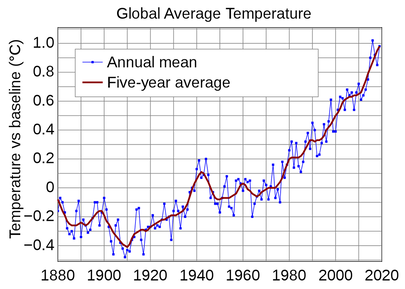 Global Warming Global Warming There are thousands of scientists who, much like the astronomers, spacecraft experts, and physicists alluded to above, are also finding out some amazing things in other fields of science. Climate scientists are finding that the Earth is warming due to human activities, and that unless we reduce our consumption of fossil fuels and implement green technologies, we are going to do great damage to our planet. Vaccine scientists are coming up with new vaccines against terrible diseases, and alerting us about the dangers of not vaccinating our children. Evolution scientists are applying the tenets of evolution to come up with useful applications that benefit our society, and warning us about the dangers of the scientific illiteracy that would be created if creationism were to be accepted and taught in schools. However, unlike things in space or in the realm of subatomic particles, climate change, vaccines, and evolution affect people directly. They are told they HAVE to use less fossil fuels and more green technologies. They are told they HAVE to vaccinate their children. Their children ARE taught in school that something that goes against their faith is true.
And what a difference this makes to some people! All those scientists who were “persons like you or me who strive to be honest and are genuinely interested in figuring out the truth about things” are now deluded, evil liars and cheats, or atheists. All those safeguards that supposedly keep science and scientists true and honest have failed in these fields, and all the science in the climate, vaccine, and evolution disciplines has become part of nefarious conspiracies to fake or misrepresent data, get money, cause harm, take away our liberties, destroy religion, or spread socialism! However, astronomers, space craft experts, and physicists are not different from climate, vaccine, and evolution scientists in that they all follow the scientific method to find the truth about the behavior of matter and energy in their fields of expertise. These people uncover the way our world and the universe works, and then they report it. All scientists do this. Why demonize and delegitimize some and not others? The answer is, as mentioned above, because what some scientists find in some fields challenges our behavior or our beliefs. This is one of the things about science that some people cannot deal with. Science is not just about generating pretty pictures and interesting experiments for show. The purpose of science is to discover reality. And in doing so, science may reveal that what you are doing is harmful to yourself, society, or nature. Science may also reveal that some of your most deeply held beliefs and convictions are not true. While many people welcome these discoveries and change their behavior or beliefs, others have a lot of problems in dealing with this and will understandably lash out at science and scientists. But that’s the way science works. Reality cannot be compromised. The Image of the Black Hole of the Galaxy M87 by the Event Horizon Telescope is free for public use. The Global Average Temperature graph by NASA is in the public domain. 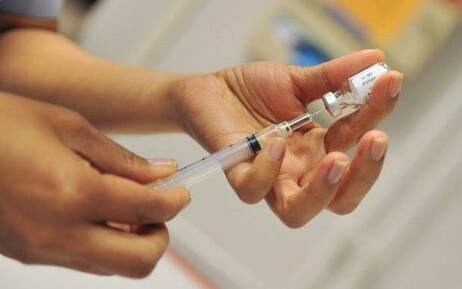 Anti-vaccination groups have put out many arguments against vaccines which have been rebutted by scientific and health organizations in many publications. I don’t want to cover all these arguments because I want to address the most important and irrefutable argument against vaccines, but before I do that, I want to mention some of the most salient of the lesser arguments. Scientists and Clinicians have sold out to pharmaceutical companies which make a lot of money from unnecessary and dangerous vaccinations.
The vast majority of scientists and clinicians vaccinate their children. If these scientists and clinicians are dishonest people who sell out to pharmaceutical companies to peddle and support harmful vaccinations, why would they do that to their kids? Do you think all these people with doctorate degrees are evil, ignorant, or stupid? Also, pharmaceutical companies would make a lot more money from selling the medicines required to treat the onslaught of diseases that would roar back into our societies if we stopped vaccination than they make from vaccination itself. Vaccines cause autism and sudden infant death syndrome (SIDS). No they don’t. Well-designed studies with large numbers of children have found that vaccines are not linked to autism or SIDS. If a child is all right and develops autism after he gets his vaccines doesn’t that mean vaccines cause autism? The age at which most children are diagnosed with autism coincides with the age at which many vaccines are administered. Considering that millions of children are vaccinated, it is very likely a vaccination and an autism diagnosis will take place sufficiently close together that a parent may be tempted to infer a causal relationship between them. But there is no such relationship. Vaccines contain chemicals that cause health problems. Vaccines contain small amounts of chemicals that fulfill different functions during the production of a vaccine or in the final product. Many of these chemicals are already present in other medicines, in the food we eat, and even around our houses. At the doses used in vaccines, none of these chemicals has been found to be harmful. All the vaccines children receive can overwhelm their immune system. From the moment a child is born they are exposed to the myriad of bacteria, viruses, fungi, and other microorganisms present in the environment. The challenge to a child’s immune system posed by vaccines is a small fraction of what the immune system normally handles and no studies have found that too many vaccines can overwhelm the immune system. Vaccination is unnatural. It is better for children to get diseases and develop a natural immunity. The process by which a child’s immune system responds to a vaccine or to an infection is the same. The difference is that with vaccines the child doesn’t have to get sick, or face the risk of dying or developing complications from the disease. There are risks involved in getting vaccinated. Yes, and there are also risks involved in driving a car. Everything has a risk associated with it, and vaccines are no exception. However, the risks of getting vaccinated are extremely small compared to the risks of not being vaccinated. The safety of vaccines and adverse effects due to vaccines are continuously monitored and compiled by government agencies, and they are the object of scientific research. There are individuals who should not get vaccinated if they, for example, are prone to strong allergic reactions or have weak immune systems. So now that we have disposed of some of the lesser arguments against vaccination, let’s get down to the real argument against vaccines. This is in fact the most important argument of them all, and it permeates the whole of the anti-vaccine movement and the anti-vaccine literature, although it is seldom expressed in verbal or written form. This argument is the following: Vaccines HAVE to cause disease. Vaccines HAVE to be dangerous. Vaccines ARE unnecessary. Doctors and scientists ARE lying to us. ACCEPTING ANYTHING DIFFERENT IS UNACCEPTABLE, period, end of the discussion. In the majority of cases, this is the real argument against vaccines, and it is, of course, irrefutable. The truth is that by and large most of those vehemently opposed to vaccination are too emotionally invested in their cause to consider the evidence. The reasons for this are complex and may differ from one person to another, but they are probably related to the general reasons why human beings uncritically believe in conspiracy theories. In any case, this argument creates a challenge for scientists and health professionals. But the challenge is not to convince those that are against vaccination, which are a minority. The real challenge is vaccine hesitancy. This involves many parents who are open to vaccinating their kids but have concerns because of things they have read or heard. These are the individuals that pose the real risk to society because of the possibility that they will delay the vaccination of their children or choose only to vaccinate them against some diseases, or not to vaccinate at all. Health professionals must get to these parents before the anti-vaccination activists win their hearts and minds, and this cannot be achieved by coldly reciting the results of studies, or by pressuring or shaming them. In this modern era, not only have parents been exposed to a lot of alarmist misinformation regarding vaccines, but they also do not have the experience of earlier generations that lived at a time when many diseases such as polio ran rampant. When explaining to parents the need for vaccination, health professional must avoid judging and contradicting the parents. The parents’ concerns must be addressed sympathetically within the framework of a dialog that helps them examine their own uncertainties, and this must be done beginning at the time of a baby’s birth. Only in this way we will meet the challenge. The vaccine photograph by the US army is in the public domain.  911 Conspiracy 911 Conspiracy I have often dealt in my blog with people who believe in conspiracy theories. These are individuals such as those who claim the Earth is flat and that the moon landing never happened; those who claim that the World Trade Center buildings on 911 were brought down by explosive charges and not by fires; those who claim that vaccines cause autism; those who claim that climate change isn’t real and the evidence for it is forged or altered by scientists and politicians trying to take away people’s rights and spread socialism; those who claim that the teaching of evolution is part of a conspiracy to attack religion and inject atheism into schools; or those who claim that the condensation trails left behind by flying jets are the result of the government spraying chemicals at high altitude. Why do people believe in conspiracy theories? What does science have to say about this matter? The belief in conspiracy theories has only become an important area of scientific investigation in the last two decades, but scientists have made many interesting observations and proposed hypotheses about the dynamics of the process as well as those who engage in it. The research so far indicates that, despite the great diversity of conspiracy theories, the belief in them arises as a result of the same underlying and predictable psychological processes. If an individual believes in one conspiracy theory, it is very likely that this individual will believe in other conspiracy theories even if these theories are mutually contradictory. Additionally, the belief in conspiracy theories can be greatly influenced by social context. Situations that lead to crisis in a society, such as wars, natural disasters or rapid social change, or situations that lead to individuals or groups of people feeling powerless, vulnerable, or victimized, will increase the belief in conspiracy theories.
The belief in conspiracy theories has been proposed to conform to four basic principles: 1) Belief in conspiracy theories has consequences. These consequences may be mostly negative affecting things like health, interpersonal relations, and safety of individuals or groups of individuals, but conspiracy beliefs can also fuel social change in societies, with the nature of the outcome being dependent on the type of change brought about. 2) Belief in conspiracy theories is universal. This means that belief in conspiracy theories is prevalent in all human cultures and is also found both in the present and the past. This suggests that belief in conspiracy theories is part of our biology and may have arisen through natural selection. The hypothesis has been proposed that in ancient hunter-gatherer societies, conspirational thinking was actually an advantage for individuals who faced intergroup conflict and aggression from other individuals who formed coalitions. 3) Belief in conspiracy theories is social, because it results in the upholding of a strong ingroup identity and the protection of this ingroup against some outgroup that is perceived to be hostile. It has been found that people who are likely to perceive their ingroup as superior, and to perceive outgroups as threatening, are more prone to belief in conspiracy theories. 4) Belief in conspiracy theories is emotional. Despite the fact that many conspiracy theories are underpinned by elaborate arguments, the evidence indicates that believers in conspiracy theories rely more on emotional and intuitive rather than analytical thinking. This may be the reason why belief in conspiracy theories can be triggered by strong emotional stimuli that produce anxiety, uncertainly, and feelings of lack of control. The belief in conspiracy theories has been proposed to be driven by three psychological motives: 1) Epistemic Motives: These motives involve the need to reduce uncertainty by finding explanations when information is ambiguous or lacking; the need to find meaning when faced with seemingly random events; or the need to defend beliefs when they are challenged. 2) Existential Motives: These motives involve the need for individuals or groups to feel safe and in control of their environment. 3) Social Motives: These motives involve the need to maintain a positive image of oneself or of one’s ingroup. The belief in conspiracy theories may allow the individual or the group to deal with a threat to the positive image of the self or of the group by blaming others for negative outcomes. As I explained at the beginning of this post, research into conspiracy theories is an emerging scientific field, so we need to give scientists time to gather more evidence and put to test the relevant hypotheses before we can come up with a definite theory regarding the how and why of conspiracy theories and their believers. But one of the things that I found interesting is the idea that conspirational behavior, far from being a pathology, may actually be part of our biology and may serve (or may have served) some useful purpose in our evolutionary history. This means that every one of us is capable of displaying this behavior, even without being conscious of it. Regardless of whether conspirational thinking may be a product or our biology and serve several purposes as outlined above, I would argue that in the cases where conspiracy theories do not match reality (which is the majority), the long-term effects of leading a life divorced from said reality cannot be positive. I believe this is especially true nowadays in the age of the internet when believers in conspiracy theories band together and form networks of like-minded individuals with their own websites, and chatrooms. Such groups are easily identifiable by those who want to infiltrate their communities and exploit them. Believers in conspiracy theories tend to view with distrust people like me who disagree with them publicly, but I think the real threat to these groups are those who agree with them in order to prod them towards some action. I have already outlined a step by step procedure by which anyone can sell snake oil. In my opinion, believers in conspiracy theories are highly vulnerable to snake oil salesmanship. This exploitation of conspiracy theory believers by unscrupulous individuals or organizations has taken place, and will continue taking place, because conspiracy theory groups tend to insulate themselves from those who are most likely in the position to help them, which in this case are those who disagree with them. Such is the complexity of the human mind. Photograph by Damon D'Amato is used here under an Attribution 2.0 Generic (CC BY 2.0) license. 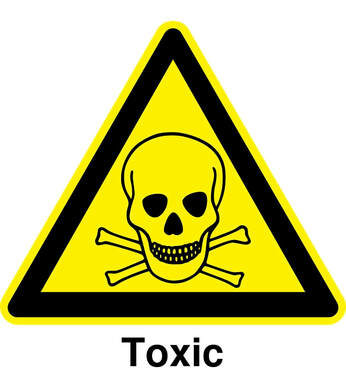 In the United States, there is now a growing movement to ban the dangerous chemical “dihydrogen monoxide”. What is this chemical? Dihydrogen monoxide is widely used in industry for processing, washing, diluting, cooling, or transporting a variety of products. Specifically, it is used by smelting facilities, petroleum refineries, and industries producing metal, chemical, and paper products, but most alarmingly, it is also widely used by the food industry. So what is the problem with this chemical? The problem is that it can kill people!  Sodium Salt of Thimerosal Sodium Salt of Thimerosal Accidental inhalation of dihydrogen monoxide kills several thousand Americans every year and over 2 million people worldwide. Oral ingestion of dihydrogen monoxide can result in dihydrogen monoxide intoxication which is characterized by headaches, confusion and disorientation, and nausea and vomiting. If left untreated, dihydrogen monoxide intoxication may lead to muscle weakness, spasms or cramps, and can cause seizures and loss of consciousness. Exposure to the solid form of dihydrogen monoxide can cause serious tissue damage. Pure dihydrogen monoxide injected intravenously to laboratory rats or mice will kill them. Despite the above, get ready for this, there is no urgency whatsoever in the government to ban this chemical. It is dumped legally (!) as a waste product by multiple industries into our rivers and lakes, and even into the ocean. Dihydrogen monoxide in the environment contributes to global warming, and to the erosion of the landscape. It causes corrosion of metals, electrical failures, and millions of dollars in property damage each year. The acid form of dihydrogen monoxide (hydroxyl acid) is a component of acid rain which destroys our forests. The presence of dihydrogen monoxide can be detected in wildlife and in our own bodies! Enough is enough! The time has come to ban the use of dihydrogen monoxide for good. Will you join our group of concerned citizens, donate to our cause, and help us pressure our government to vanish the use this dangerous chemical? Let me answer that question for you. The answer is: NO. Why? Because dihydrogen monoxide is one of the chemical names of “water”. What I wrote in this post about dihydrogen monoxide is just my version of a recurrent hoax /joke that has been going around for decades, and is meant to illustrate how the lack of scientific literacy, and the phrasing of alarmist claims, can affect public opinion. In the most extreme forms of this hoax, people are requested to sign a petition to ban dihydrogen monoxide, which often leads to the collection of many of signatures. Choosing the right words, and saying things about any chemical in the right way, can make it look scary, and in this case, I didn’t even have to lie. Everything I wrote is true. For example, accidental inhalation of water can kill people (it’s called drowning), excessive ingestion of water can be hazardous (it’s called over hydration; there is a method of torture based on this), formation of water crystals (ice: solid form of water) inside the cells of your tissues can damage them (frostbite), and injection of the right amount of pure water into animals can wreak havoc on the body’s electrolyte balance and kill them. In today’s vast scientific literature, where virtually every chemical has been tested in one way or another, it is very difficult not to find examples of a chemical having a deleterious effect on some parameter of some biological model. And with today’s unparalleled access to information, people who believe they know more than the experts can set out on a crusade against any chemical. All they have to do is pick and choose studies from the scientific literature, without any regard for their quality or relevance, and weave them into a narrative using innuendo and questionable association to other compounds, which will cast the chemical in the worst possible light. This approach combined with the right mix of emotions, exploitation of human suffering, and politics can prove very effective, and is not unlike selling snake oil. A famous case of the above strategy is when those opposed to vaccination waged a campaign against the chemical thimerosal which was alleged to cause autism. Thimerosal is a chemical that was used in many vaccines to prevent the growth of germs. Once inside the body, thimerosal is degraded to a derivative of mercury called ethylmercury. Mercury by itself or in the form of methylmercury is toxic, but ethylmercury is not toxic at the levels delivered by vaccines and is cleared from the body faster than methylmercury. In many cases, the anti-vaccine popular literature engaged in the innuendo that because mercury is toxic and thimerosal contains mercury, then thimerosal must be toxic. However, the toxicity of an element like mercury is heavily dependent on the way it is combined with other elements in chemical compounds. For example, the explosive elemental sodium (Na) and the extremely toxic chlorine (Cl), when combined with each other form the innocuous NaCl which is table salt. The pressure to ban thimerosal kept mounting, and the US Public Health Service decided to request that vaccine companies remove thimerosal from most childhood vaccines in 1999 as a precautionary measure to decrease overall exposure in infants to mercury derivatives. However, the best designed studies did not find any conclusive association between thimerosal (or vaccines for that matter) and autism. After thimerosal was removed from most childhood vaccines, the number of cases of autism has kept on increasing, indicating that thimerosal in vaccines was not responsible for this trend. However, none of this has been accepted by the anti-vaccine community, which is busy at work convincing more and more parents not to vaccinate their children and peddling conspiracy theories. Not unexpectedly, the number of measles cases in the United States has reached an all-time high since it was seemingly eliminated in 2000. This is not to say that there aren’t legitimate cases where the public should be concerned about the use of certain chemicals in medicine and industry, or instances where politics or other influences have vitiated the established procedures to determine safety. But the answer is not to stoke people’s fears, enshrine faulty science as truth, and disavow the assessment of experts on complex scientific issues claiming they have “sold out” if they do not support alarmist theories. The dihydrogen monoxide hoax is a joke, but what happened to thimerosal isn’t. Our life is better today thanks to thousands of medicines and chemicals produced by our pharmaceutical companies and industries. If we are concerned about the safety of these products, we should work with our scientific and medical organizations, not against them. Human nature is flawed. There will always be individuals who will engage in deceit, but the vast majority of scientists are principled people who will accept the evidence when it is clear and reproducible. The image from Pixabay is licensed for public use. The image of thimerosal by vaccinationist was taken from PubChem and is in the public domain.  Isolated Tribe in the Amazon Isolated Tribe in the Amazon I have written that science can replace magical thinking, superstition, or erroneous ideas or beliefs by ever more refined and focused views of reality though observation and experiment. And this is essentially true. Science has done away with many beliefs and ideas that were not backed by facts. However, these changes rarely happen overnight, and in fact they are often met with stiff opposition. A significant number of people won’t modify their thinking based merely on piles of scientific evidence. If one of the purposes of performing science is to generate knowledge that will help people, then scientists have to take the beliefs and cultural norms of societies into account when pursuing the application of scientific knowledge. To illustrate this, let me tell you a story. A long time ago a physician friend of mine was working in the Amazon jungle. He was tasked with helping the local natives with their medical needs. At the time, an outbreak of malaria was decimating some of the local tribes. My friend told me the story of how he had traveled by boat up a river for several days and then hiked through the jungle to reach a particularly remote tribe. He contacted the tribe’s healer and explained to him that he had some medicine that could help protect the tribe against malaria, but that it was not strong enough by itself, so he needed the help of the healer. He explained that if they combined his medicine with the healer’s powers, they would be able to beat the malaria scourge that was affecting the tribe. So my friend proceeded to treat all the members of the tribe and the healer proceeded to make his potions and perform his dances and rituals, and all the individuals in the tribe affected with malaria were cured. On hearing this, I was astonished. Did my friend really think that the superstitious rituals and brews concocted by the tribe’s healer contributed or were needed at all to cure the malaria?
Now, let me be clear on two things. First, I agree that indigenous peoples throughout the world have developed a rich and effective arsenal of products derived from plants and animals in their environment to treat different ailments and conditions. Second, I also agree that in diseases that are self-terminating (i.e. those from which most people recover) the right psychological frame of mind can go a long way towards making individuals recover faster from their ailment. Even if a treatment is not really effective in curing a person, merely believing it is can make a difference in terms of how fast a person recovers their health. However, when it comes to certain extreme diseases, both indigenous medicine and psychology have limitations, and they cannot compete with medicines designed through evidence-based science. When I questioned my friend about these matters, he agreed with me that the healer’s traditional methods were not effective against malaria, but then he stated that that was not the issue. He explained that in tribes like the one he visited, the healer is a central figure in the hierarchy of the tribe. In the eyes of his fellow tribe members, the healer is so important in the role of protecting the tribe from dangers both real and imagined, that a healer who is perceived as ineffectual can deeply affect the psychology of the tribe and impair the way the tribe faces difficult challenges. My friend said that if he had barged right in and cured everyone, he would have delegitimized the healer in the eyes of the tribe and done a greater damage to the tribe than malaria. This is why he concocted the story about the need to combine both treatments. I was a bit shook up by this. I understood that from a practical point of view this approach made sense, but I remained ambivalent. I asked him, what about truth, facts, evidence, and reality? My friend replied that if enough people believe something no matter how preposterous, that belief for all practical purposes becomes a reality that you have to deal with if you are interested in helping out. If you go head on against these beliefs and disavow or belittle them, you will do more harm than good. I have thought about what my friend said over the years, and I believe it has some truth. People have deeply held beliefs that are often very important to them. From a scientific point of view, I may understand that some of these beliefs can be demonstrated to be false such as, for example, the belief in creationism, but I have to understand that the mere generation of more data and its repetition will not sway minds. And I think that this is a concept that should be applied (and is actually being applied) to the opposition against many of the initiatives that we need to implement today such as dealing with global warming or dealing with an increasing number of unvaccinated children. This is especially true in our current polarized environment, where scientists are portrayed by many with vested interests either as atheistic, liberal, socialist individuals who want the government to take over the lives of regular folk, or as individuals beholden to corporate interests who deliberately hide, falsify, or mischaracterize data. The success of the strategy I outlined above will depend on the approach. Very conservative and religious people will be suspicious of scientists warning them of how, unless we change our behavior, we will harm the planet. However, they may be more receptive if the focus is on the concept that humanity is the steward of creation; that we should take care of what God has created. This approach will be even more effective if it is implemented by individuals who share their own beliefs. A similar approach is also needed with people who are hesitant to vaccinate their children because they believe that vaccines cause autism. Many of these people have been swayed by stories of human suffering interpreted within the context of false or simplistic alarmist explanations. Data and facts are important in combating these false or misleading narratives, but the human side of the issue has to be addressed if scientists wish to change some minds. Scientists should acknowledge the parent’s fears and stress that the common goal of everyone is to protect children, and explain that’s why scientists vaccinate their own children. They should talk about the millions of people alive today because of vaccines, about how the world was when smallpox, diphtheria, pertussis, tetanus, polio, measles, mumps, rubella, and other diseases were prevalent in our societies. Again, these arguments will be more convincing if delivered by former vaccine opponents. The human mind is very complex. Different people perceive the same reality in different ways determined by genes, experience, and culture. Some of these perceptions will not conform to the actual veridical reality that’s out there, but as explained above, this in itself constitutes a reality that must be taken into account if we truly want science to help humanity. Whether it is helping a tribe in the Amazon or getting people to go green or to vaccinate their children, science cannot operate in a vacuum. Photo by Agência de Notícias do Acre used here under a Creative Commons Attribution 2.0 Generic license. |
Details
Categories
All
Archives
June 2024
|

 RSS Feed
RSS Feed